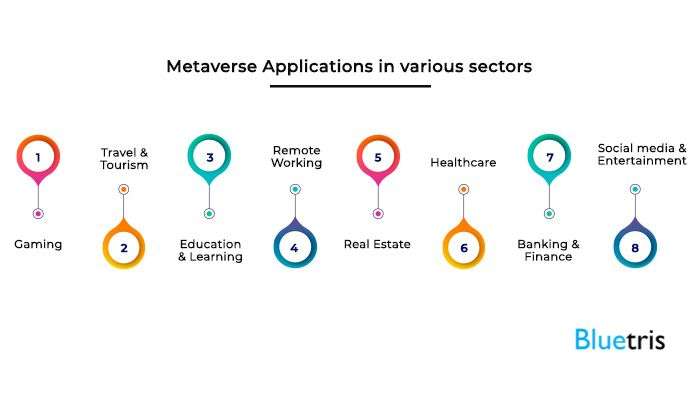DevOps is a collaborative effort aimed at conceiving, constructing, and delivering secure software with utmost efficiency. By incorporating practices that emphasize automation, collaboration, prompt feedback, and continual improvement, DevOps facilitates the acceleration of software delivery by harmonizing the efforts of development and operations teams.
Streaming in an Agile principle, the DevOps process builds upon a cross-functional approach to expedite the building and deployment of applications more iteratively. Opting for a DevOps development approach signifies a commitment to enhancing the flow and value delivery of your application, fostering a collaborative environment throughout the entire development cycle.
It signifies a shift in the IT culture, building upon Agile, lean practices, and systems theory, with a focus on incremental development and swift software delivery. Success in DevOps hinges on cultivating a culture of accountability, enhanced collaboration, empathy, and shared responsibility for achieving business objectives.
What is DevOps?
“DevOps is a combination of software development (dev) and operations (ops). It is defined as a software engineering methodology that aims to integrate the work of development teams and operations teams by facilitating a culture of collaboration and shared responsibility.”
Core Principles of DevOps
The DevOps methodology is built upon four core principles that enhance the efficiency and effectiveness of application development and deployment. These principles, outlined below, encapsulate the most valuable aspects of contemporary software development.
- Automation of the Software Development Lifecycle: Streamline the software delivery process by automating tasks such as testing, builds, releases, and the provisioning of development environments. This reduces slowdowns and minimizes the introduction of human error.
- Collaboration and Communication: A proficient DevOps team incorporates automation, but an exceptional one also prioritizes effective collaboration and communication among team members.
- Continuous Improvement and Waste Minimization: High-performing DevOps teams are constantly seeking ways to enhance efficiency, from automating repetitive tasks to analyzing performance metrics to reduce release times and mean-time-to-recovery.
- Hyperfocus on User Needs with Short Feedback Loops: Through automation, improved collaboration, and continuous improvement, DevOps teams can concentrate on understanding and fulfilling the real needs of users, establishing short feedback loops for rapid adjustments.
By embracing these principles, organizations can elevate code quality, accelerate time to market, and enhance overall application planning.
The Four Phases of DevOps
As DevOps has evolved, so has its complexity. Two factors drive this complexity:
- Organizations are moving from monolithic architectures to microservices architectures. As DevOps matures, organizations need more and more DevOps tools per project.
- The result of more projects and more tools per project has been an exponential increase in the number of project-tool integrations. This necessitated a change in the way organizations adopted DevOps tools.
This evolution took place in the following four phases:
Phase 1: Bring Your DevOps
In the Bring Your Own DevOps phase, each team selected its tools. This approach caused problems when teams attempted to work together because they were not familiar with the tools of other teams.
Phase 2: Best-in-class DevOps
To address the challenges of using disparate tools, organizations moved to the second phase, Best-in-class DevOps. In this phase, organizations standardized on the same set of tools, with one preferred tool for each stage of the DevOps lifecycle. It helped teams collaborate, but the problem then became moving software changes through the tools for each stage.
Phase 3: Do-it-yourself DevOps
To remedy this problem, organizations adopted do-it-yourself (DIY) DevOps, building on top of and between their tools. They performed a lot of custom work to integrate their DevOps point solutions. However, since these tools were developed independently without integration in mind, they never fit quite right. For many organizations, maintaining DIY DevOps was a significant effort and resulted in higher costs, with engineers maintaining tooling integration rather than working on their core software product.
Phase 4: DevOps Platform
A single-application platform approach improves the team experience and business efficiency. A DevOps platform replaces DIY DevOps, allowing visibility throughout and control over all stages of the DevOps lifecycle. By empowering all teams – Development, Operations, IT, Security, and Business – to collaboratively plan, build, secure, and deploy software across an end-to-end unified system, a DevOps platform represents a fundamental step-change in realizing the full potential of DevOps.
DevOps platform is a single application powered by a cohesive user interface, agnostic of self-managed or SaaS deployment. It is built on a single codebase with a unified data store that allows organizations to resolve the inefficiencies and vulnerabilities of an unreliable DIY toolchain.
What are the Benefits of DevOps Culture?
Speed: Operate at high speed to drive innovation for customers, adapt to dynamic markets, and enhance efficiency in achieving business outcomes. DevOps empowers your development and operations teams to attain these goals. For instance, the implementation of microservices and continuous delivery allows teams to take ownership of services and expedite the release of updates.
Rapid Delivery: Elevate the frequency and speed of releases to accelerate innovation and product improvement. The ability to release new features and address issues rapidly enables a prompt response to customer needs, fostering a competitive advantage. Practices like continuous integration and continuous delivery automate the software release process from build to deployment.
Reliability: Assure the quality of application updates and infrastructure changes to deliver at a rapid pace while ensuring a positive user experience. Continuous integration and continuous delivery practices verify the functionality and safety of each change. Real-time monitoring and logging practices keep you informed of performance metrics.
Scalability: Effectively operate and manage infrastructure and development processes at scale. Automation and consistency aid in efficiently handling complex or evolving systems with reduced risk. Infrastructure as code, for instance, enables the management of development, testing, and production environments in a repeatable and efficient manner.
Enhanced Collaboration: Cultivate more efficient teams within the DevOps cultural model, emphasizing values like ownership and accountability. Close collaboration between developers and operations teams, shared responsibilities, and streamlined workflows reduce inefficiencies and save time, such as minimizing handover periods between development and operations and writing code that considers its operational environment.
Security: Maintain a balance between speed and control while preserving compliance. Adopting a DevOps model doesn’t mean compromising on security; automated compliance policies, fine-grained controls, and configuration management techniques can be utilized. Infrastructure as code and policy as code enables the definition and tracking of compliance at scale.
How DevOps can Benefit from AI/ML?
AI and machine learning (ML) are evolving in their applications within DevOps, offering organizations immediate benefits, particularly in leveraging the technology to interpret test data.
These advanced technologies excel in identifying patterns, pinpointing coding issues that lead to bugs, and notifying DevOps teams for further investigation.
Similarly, DevOps teams can harness the power of AI and ML to analyze security data sourced from logs and various tools, effectively identifying breaches and attacks. Upon detection, AI and ML can initiate automated mitigation strategies and issue alerts.
Furthermore, AI and ML contribute to time savings for developers and operations professionals by learning and adapting to their preferred working methods. They offer suggestions within workflows and automatically set up preferred infrastructure configurations.
How DevOps Cycle Work?
The DevOps lifecycle spans the entire software development process, encompassing planning, creation, verification, packaging, security, release, configuration, monitoring, and governance. Here’s a breakdown of each stage:
Plan: Organize tasks, prioritize them, and monitor progress.
Create: Collaboratively write, design, develop, and securely manage code and project data.
Verify: Ensure code correctness and adherence to quality standards, ideally through automated testing.
Package: Package applications and manage dependencies, including container management and artifact building.
Secure: Detects vulnerabilities using static and dynamic tests, fuzz testing, and dependency scanning.
Release: Deploy the software to end users.
Configure: Manage and configure the infrastructure required to support applications.
Monitor: Track performance metrics and errors to minimize incident severity and frequency.
Govern: Oversee security vulnerabilities, policies, and compliance organization-wide.
This comprehensive DevOps lifecycle ensures a streamlined and efficient software development and delivery process.
How does DevOps support the cloud-native approach?
The widespread shift of software development to the cloud comes with numerous benefits, leading to the increasing adoption of cloud-native computing by companies. By constructing, testing, and deploying applications in the cloud, organizations can achieve cost savings through easier resource scalability. This approach supports swift software shipping, aligns with business objectives, and liberates DevOps teams to focus on innovation rather than infrastructure maintenance.
Cloud-native application development fosters enhanced collaboration between developers and operations teams, ultimately resulting in the delivery of superior software at an accelerated pace.
Conclusion
The foundation of IT agility and the secret to a successful digital transformation is DevOps. To begin their DevOps journey, organizations must, however, implement organisational, process, and cultural changes.
The goal of several key DevOps practices, such as automation, continuous integration, continuous delivery, and observability, is to improve efficiency and streamline the software development process. Software development teams can increase their productivity, quality, and speed by implementing a continuous integration and delivery pipeline and automating repetitive tasks. This is made possible by DevOps.
DevOps is about culture and teamwork as much as it is about tools and procedures. The goal of DevOps is to improve communication and understanding of needs and goals between development and operations teams by bringing them together to work more closely and productively. In a DevOps culture is accountable for the software’s quality and delivery, and cooperation and communication are highly valued.
If you want to enhance your software development process, you should give DevOps some thought.
Feel free to reach out for your DevOps Solutions or optimization of your current DevOps Project. We provide different DevOps Services, Cloud Computing, Automation, Cost Optimization, and Agile Methodology. We’re eager to learn about your project needs and discuss potential collaborations.
Frequently Asked Question
The ultimate objectives of a DevOps engineer are to expedite the software development cycle, boost the frequency of software releases, integrate development and operations teams, and enable more dependable releases.
The goal of the DevOps methodology and culture is to optimise software delivery processes by fostering cooperation and integration between development and operations teams. Although writing code is a crucial part of developing software, DevOps includes a wider range of procedures, resources, and ideas than just coding.
Coding and scripting are essential skills for automating any kind of DevOps task. You’ll be able to simplify your work and boost productivity and efficiency with these abilities.
If you’re new to DevOps, start by studying the foundations of cloud computing, operating systems, and programming. Learn about DevOps tools and procedures, create your own projects, participate in open-source initiatives, and look for internships or entry-level jobs in the industry.
A few of the most widely used DevOps automation tools are Chef, Ansible, Puppet, and SaltStack. An infrastructure management tool that assists you in managing your infrastructure as code is called Puppet.






